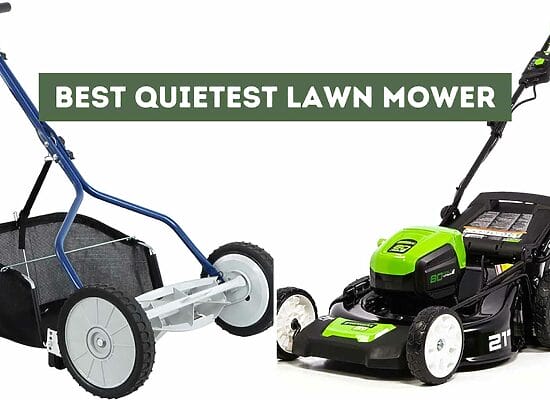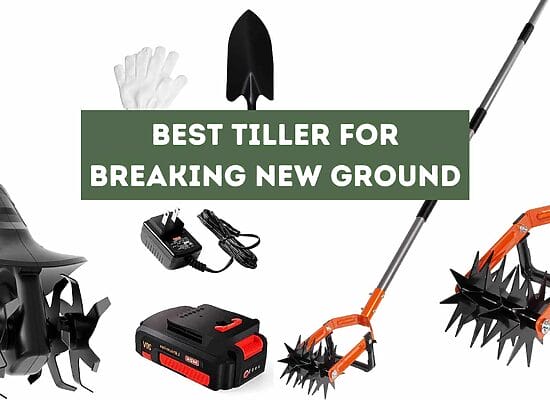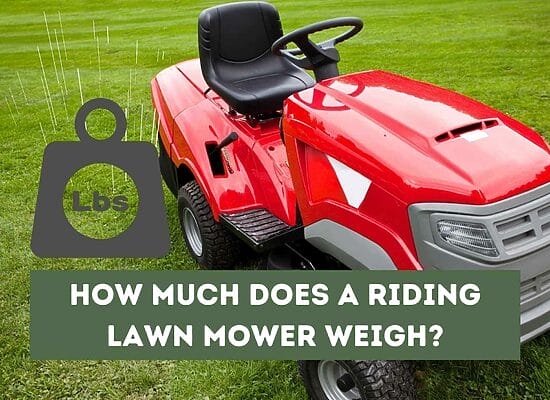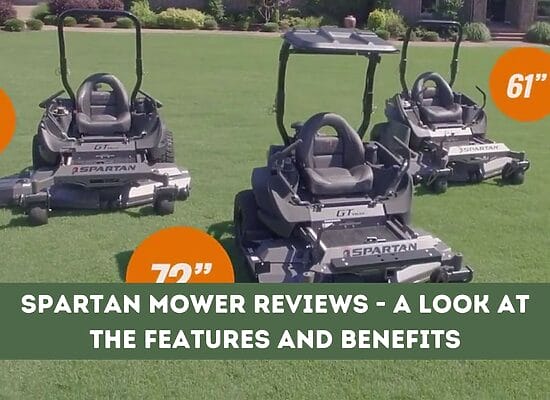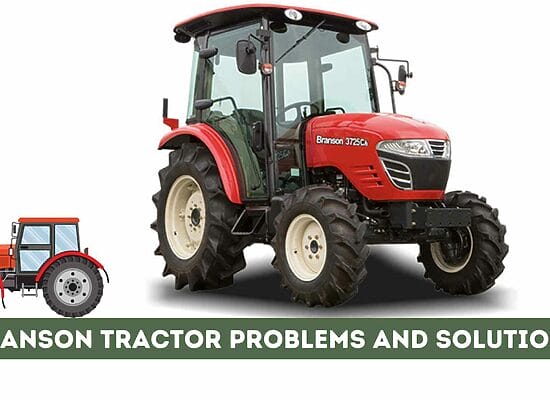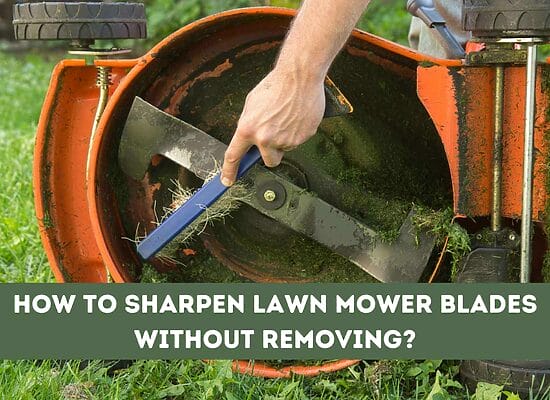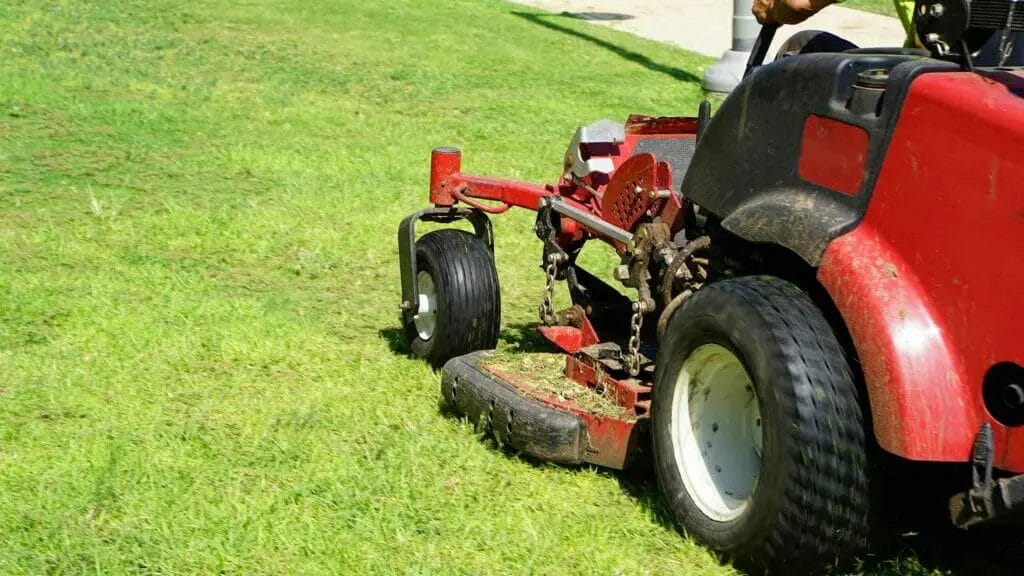
I have owned a Ferris zero-turn mower for over 1000 hours now, and I love it. I really like how nimble it is around my garden. I can get in close to trees and turn the cutting deck away from obstacles at a moment’s notice.
I would strongly recommend getting a Ferris mower to anyone, especially those with front suspension. It has not been all plain sailing over the years, though. There have been a few issues I have had to deal with. Read on to discover the most common Ferris zero turn mower problems and solutions.
The problems I experienced with my Ferris zero turn mower
The few problems I have had with my mower have not been major issues, but they have been annoying, and that’s because identifying what is causing the problem is usually more difficult than fixing it. I have made a list of the areas where I have had problems and how I have fixed them below.
1. Engine not starting
A few times, I have went out to cut my lawn, and the mower hasn’t started. There were different reasons for this, and each had a different fix.
The first check on your list is to ensure there is petrol in the tank!
Engine not turning over – this was when I turned the ignition key, and it made no sound- it didn’t even turn over – the reason why it did this was either the battery was flat, caused by the ignition left on, or the battery needed to be replaced.
The other time the engine didn’t turn over. It made a ticking noise. This ticking noise was because my starter was faulty- the clicking was the solenoid engaging the flywheel, but the starter motor was faulty, so it had to be taken off and replaced.
Another reason your engine may not start is that the carburetor’s fuel line has an on/off valve operated by a solenoid. Sometimes the solenoid will stick in the off position if your mower has sat unused for a long time. This means you could be turning and turning the engine over, but it won’t start because the engine won’t get fuel. The way to fix this is to either replace the fuel valve solenoid or, sometimes, if you give it a tap with a hammer or a spanner, it will release and open.
If you find that your mower will start, but it is hard to start, or it doesn’t run smoothly or won’t take revs well, it is usually a sign that the spark plug needs to be replaced. Bad spark plugs are super annoying because the engine runs poorly. Usually, the engine will splutter when it is laboring, cutting long grass, etc. It’s an inexpensive fix that improves engine performance.
One final note on engine troubles – if you notice your engine is hard to start, it could also be the air filter is very dirty and needs to be replaced.
2. The grass is not cut very well
There haven’t been many instances when I’ve had trouble with the finished cut of my grass, but when there was, it was usually because the blades needed to be sharpened.
If you notice your grass doesn’t look as clean cut, as usual, take a closer look at the end of the blades of grass- if the end of the blade of grass is not cut cleanly but instead looks torn- that means you need to get the blades of your mower sharpened.
Note: Dull cutting blades will also make your mower labor more when cutting long grass than it usually should.
Blades should be removed to sharpen them properly – this means you need to get the deck of the lawnmower lifted up – either by driving your mower over a mechanics pit or taking your mower to a lawnmower service shop.
I want to point out that the blades are set at specific timing, so they don’t hit each other when the mower is running. They need to be marked where you’ve taken them off and replaced in the same location.
One other instance of the mower not leaving a nice cut happened when I noticed the mower was cutting the grass lower on one side than the other.
On further inspection, I found out that the tire on the low-cutting side was soft due to a slow puncture. The issue was gone when I got the tire patched and re-inflated to the same pressure as the other side.
Remember that incorrectly inflated tires running at different pressure cause problems with stability and traction.
In wet grass, remember to slow your forward speed and the speed of the cutting blades to help the mower cut the grass more effectively.
3. Mower not turning properly
Rarely have I had any trouble with the turning on my mower, but what I have had to do was adjust the stop bolts so that I was going forward and backwards the same amount on each side.
If you find that your mower doesn’t run in a straight line with both steering handles fully forward or fully backwards, it is because their stop bolts are not equal on each side. This means that one side will be making that wheel turn faster or slower than the other side.
To fix this, you should take your mower to a clear space and push both levers fully forward – if your mower doesn’t run in a straight line, you’ll need to adjust the stop bolt further inwards on the slow side make it run at the same speed as the other side. This is the same procedure in reverse.
I also noticed that the reverse speed of my mower was very slow, so I adjusted the rear stop bolts, so I had a decent reverse speed. It is much better now – but take care that when you adjust your reverse speed faster, it can cause the mower to lift the front wheels if you change to forward direction suddenly.
4. Brakes not working
As a Ferris zero-turn mower doesn’t have a brake pedal (you pull the steering levers in backwards), the only brake you need to adjust is the parking brake. Often when the parking brake become worn, it can be accidentally left on, making it wear even further.
I adjusted the linkage from my park brake lever to the rear brakes when I noticed my mower wasn’t holding as well as it used to. This was a two-minute job using a shifter. Tighten the adjusting nut on the cable, which is situated at the rear hub. If you have already adjusted your parking brake many times and it is still bad, you may need to change the brake shoes inside the brake drum.
5. Suspension problems
I love the suspension on my Ferris zero-turn mower. It must be one of the best mowers you can buy for comfort when cutting. My mower has a four-wheel independent suspension, and I opted for the suspension seat also, so I like my comforts! I had a small issue with my rear suspension units, it wasn’t that anything was broken or faulty, but it was still an issue I needed to fix.
My rear suspension units consist of a shock absorber and an adjustable coil spring. The shock absorber slows the up-and-down action, and the spring adjusts the ride height relative to the weight it carries. The issue I had was I noticed when I traveled over large bumps at speed that my suspension would bottom out solid – I am quite heavy, and the hard jolt when it bottomed out was not enjoyable.
To fix this, I adjusted the nut on my suspension unit to stiffen the spring. This now prevents the mower from bottoming out when I travel over large bumps. This works in reverse if you are small and light and find the suspension feels too firm- slacken the adjusting nut at the bottom of the spring to your preference.
Other most common Ferris zero turn mower problems and solutions
There are other problems that you may come across with Ferris zero-turn mowers. These include things such as:
6. Hydro gear transmission problems
Hydrostatic transmission problems are also a common issue with Ferris zero-turn mowers. Some symptoms include difficulty steering, slow or jerky movement, and a loss of power. Even though I never experienced major problems with my Ferris zero-turn mower, if I did, these are the steps I would take to diagnose and fix them:
- Low or dirty oil: The hydro-gear system relies on oil to function properly. If the oil level is low or the oil is dirty, it can cause problems. Check the oil level and condition and add oil or change the oil if necessary.
- Air in the transmission: A common issue is air being trapped in the transmission. This can cause jerky movement and a lack of power. Bleed the transmission to remove any air trapped inside.
- Worn or damaged seals: If the seals on the hydrostatic transmission are worn or damaged, they can cause leaks and problems with the transmission. Check the seals for signs of wear or damage and replace them if necessary.
- Stuck valves: If the valves in the hydrostatic transmission become stuck, it can cause problems with the transmission. Check the valves for signs of wear or damage and clean or replace them if necessary.
- Worn or damaged gears: If the gears in the hydrostatic transmission are worn or damaged, it can cause problems with the transmission. Check the gears for signs of wear or damage and replace them if necessary.
7. Vibration problems
Vibration can be a common problem with Ferris zero-turn mowers. Some potential causes of vibration include:
- Worn or damaged blades: Blades that are worn or damaged can cause the mower to vibrate.
- Loose hardware: Loose hardware, such as deck screws, can cause the mower to vibrate.
- Uneven terrain: Mowing on uneven terrain can cause the mower to vibrate.
- Worn or damaged tires: Worn or damaged tires can cause the mower to vibrate.
Here are some common solutions for addressing vibration on a Ferris zero turn mower:
- Check and tighten loose hardware: Inspect the mower for loose hardware and tighten any loose bolts or screws.
- Worn or damaged blades: If they are worn or damaged, sharpen or replace them to reduce vibration.
- Check and inflate the tires: Check the tire pressure and inflate the tires to the recommended pressure if necessary.
- Check for other damaged or worn components: If the above steps do not fix the vibration problem, check for other damaged or worn components, such as the deck, spindles, or bearings, and replace or repair them as necessary.
8. Difficult to cut wet grass
Cutting wet grass can be a common problem with Ferris zero turn mowers. Some potential causes of difficulty cutting wet grass include:
- Dull or damaged blades: Blades that are dull or damaged may struggle to cut through wet grass.
- Clogged or dirty deck: A clogged or dirty deck can prevent the grass from being cut evenly.
- Incorrect blade angle: An incorrect angle can cause the grass to be cut unevenly or not at all.
- Wrong blade height: Setting the height too low can cause the grass to be cut unevenly or not at all.
Here are some common solutions for addressing difficulty cutting wet grass on a Ferris zero turn mower:
- Sharpen or replace the blades: If the blades are dull or damaged, sharpen or replace them to improve cutting performance.
- Clean the deck: Remove any debris or grass clippings from the deck to ensure that the grass is being cut evenly.
- Adjust the blade angle: Make sure that the angle is set correctly to ensure that the grass is being cut evenly.
- Adjust the blade height: Set the height to the recommended setting for the type of grass you are cutting.
- Mow at a slower speed: Mowing at a slower speed can help the blades cut through wet grass more effectively.
9. Poor traction
Poor traction can be a common problem with Ferris zero-turn mowers, especially when mowing on wet or slippery terrain. Some potential causes of poor traction include:
- Worn or damaged tires: Tires that are worn or damaged may struggle to grip the ground.
- Incorrect tire pressure: Tire pressure that is too low or too high can affect traction.
- Clogged or dirty tires: Debris or dirt stuck to the tires can reduce traction.
- Incorrect weight distribution: An uneven weight distribution can affect traction.
Here are some common solutions for addressing poor traction on a Ferris zero-turn mower:
- Check and inflate the tires: Check the tire pressure and inflate the tires to the recommended pressure if necessary.
- Clean the tires: Remove any debris or dirt stuck to the tires to improve traction.
- Balance the load: Make sure that the load on the mower is evenly distributed to improve traction.
- Avoid mowing on wet or slippery terrain: If possible, wait until the grass is dry before mowing to improve traction.
- Use traction aids: If the above steps do not fix the traction problem, consider using traction aids such as tire chains or weight boxes to improve traction.
Tips to troubleshoot and keep a Ferris zero turn mower running smoothly
Here are some tips for troubleshooting common problems with Ferris zero turn mowers:
- Check the fuel lines: Make sure that the fuel lines aren’t leaking and are not clogged or blocked, which can cause a loss of power.
- Check the spark plug: A faulty spark plug can cause the engine to misfire or fail to start. Remove the spark plug and check for signs of wear or damage. If the spark plug is damaged or worn, replace it.
- Check the air filter: A dirty air filter can restrict airflow to the engine, causing it to run poorly or stop running altogether. Remove the air filter and check for signs of dirt or debris. If the filter is dirty, clean it or replace it.
- Check the blade: A dull or damaged blade can cause uneven cutting or strip grass. Inspect the blade for signs of wear or damage and sharpen or replace it if necessary.
- Check the steering: If the mower is having difficulty turning, check the steering linkage and make sure it is properly lubricated and functioning properly.
- Check the drive belt: A damaged or stretched drive belt can cause the mower to lose power or stop moving altogether. Inspect the drive belt for signs of wear or damage and replace it if necessary.
If these troubleshooting steps do not fix the problem, it may be necessary to consult a professional mechanic or the manufacturer for further assistance.
In summary, a Ferris zero turn mower is a fantastic machine. Still, as with all machines, they need to be maintained and looked after. The more often you clean, service, and inspect it, the better it will perform and last.

